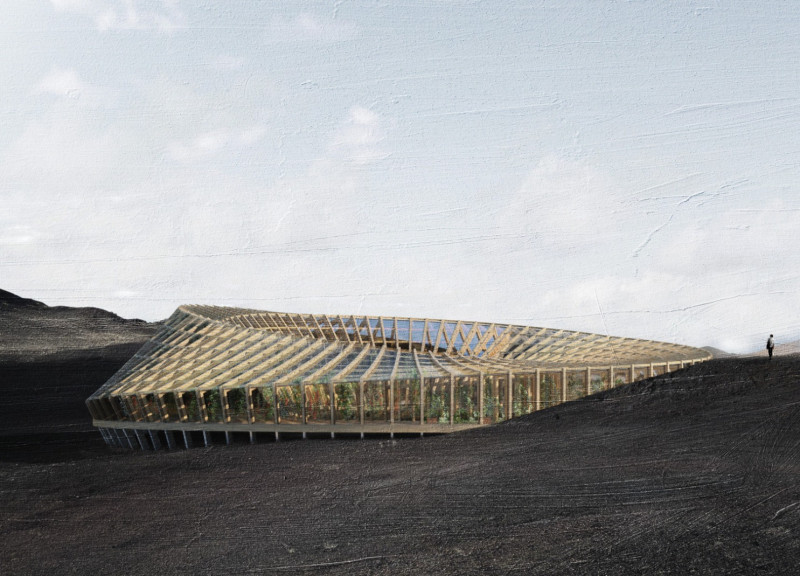5 key facts about this project
The Greenhouse Restaurant, located in the Mývatn area of Iceland, combines the experience of dining with the beauty of the surrounding landscape. Its design draws from the nearby explosion craters, creating a circular form that echoes the natural features of the region. The building is intended not only as a place to eat but also as a multifunctional space that embraces the local geography, providing visitors with views of both the Mývatn nature baths and Hverfjall volcano.
Design Concept
The twisted circular shape of the restaurant is not just for aesthetics; it serves practical purposes as well. The layout is designed to maximize exposure to natural light throughout the day, reducing the need for artificial lighting. This thoughtful orientation allows for a pleasant atmosphere inside. Separate entry points for guests and staff maintain smooth movement and workflow, ensuring that operations run efficiently.
Materiality
The structure features a green roof, similar to those found in traditional Icelandic turf houses. This design choice offers insulation, temperature regulation, and water retention, supporting sustainability. The building also uses semi-transparent photovoltaic panels, which bring natural light indoors while generating energy. The selection of materials demonstrates an emphasis on energy efficiency and environmental consideration.
Visitor Experience
Engagement with nature is a vital aspect of the restaurant's design. Glimpses into the greenhouse are available from various areas inside, allowing guests to appreciate the agricultural surroundings. The layout includes an observation ramp, providing expansive views of the stunning landscape. This connection between the building and its environment enriches the visitor experience, making it immersive.
In the kitchen area, glue-laminated timber frames are used, enabling pre-cut and pre-assembled construction methods that minimize on-site disruption. This reflects a careful approach to functionality in the design while also taking into account environmental impact. The Greenhouse Restaurant embodies a thoughtful response to its setting, blending purpose and sustainability.






















































